Table of Contents
City dwellers, especially the elderly, parents with baby buggies, and particularly citizens with reduced mobility, encounter clear accessibility problems at bus stops.
Bus stops are on the border between the road and the sidewalk, and they form a strategic link where it is necessary to ensure accessibility, making it easier for the bus to approach the curb quickly and without difficulty. When the bus does not have enough space to approach the curb correctly, this causes accessibility problems for users and makes unit loading times longer. The way to solve this problem is to extend the sidewalk towards the center of the road.
Among other things, the Vectorial® system allows sidewalks to be extended quickly, easily and economically by building semi-permanent modular platforms as LEGO pieces. There are multiple configurations that achieve the same result as permanent work, but without definitively compromising the use of the road. Also, Its modularity also allows the creation of different configurations and adapts to the needs of each environment.
Innovative and accesible bus stop designs. Vectorial® System platform for urban mobility.
Different configurations of the Vectorial® system are presented here, allowing solutions to various problems.
1. Bus platform as sidewalk extension.

This is an extension of the sidewalk that aligns the bus stop with the parking lane. Platforms as a sidewalk extensions allow buses to stop without big lateral movements, making it easier for them to approach the sidewalk, which improves the accessibility and safety of the stop.
This is the recommended configuration when the bus stop is attached to the sidewalk.
It has several benefits:
- Average operation times on the line are reduced for the transport company, as buses do not need to maneuver to get closer to the curb. Buses can also deploy their extendable ramps quickly and safely.
- Other vehicles are prevented from parking in the area of the stop. The front curbs of the Vectorial® platform system are aligned with the lane in which the bus travels.
- The sidewalk is relieved, especially narrow sidewalks, because bus users generally wait on the platform without interfering with pedestrians moving along the sidewalk.
Successful case study: bus stop improvement making it accessible and more comfortable for bus users.
The platform installed in Carrer Major de Vallirana (Catalonia) is a success story of this type of configuration. Traffic reorganization changed the bus route and, on the new route, the sidewalks of the street were very low, which made too large a step to access the buses that stopped in this street. To resolve this inconvenience, 10 Vectorial® system platforms were installed at different bus stops, eliminating the step, and the bus stops were made accessible and more comfortable for bus users.
2. Bus platform with integrated bike lane.
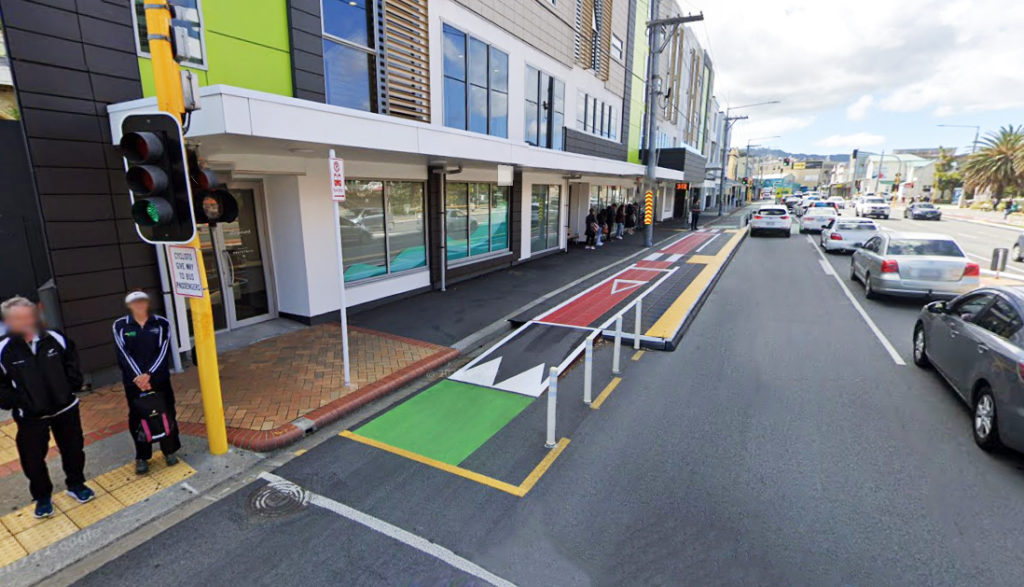
In this case, the bike lane is raised, running over the bus platform itself instead of being diverted around it. Cyclists can cross the passenger boarding area when there are no people or buses at the stop, but bus users will always have priority over cyclists.
This is the recommended configuration when the width of the street section does not allow the installation of a platform with an island configuration or an access bridge and integrated cycle lane.
This is what is achieved with this configuration of the Vectorial® system.
- Resolving the conflict that arises when a bike lane crosses a bus stop on a narrow road, allowing both to coexist safely.
- Improving the safety of cyclists, as they can continue riding in the bike lane without having to leave it and mix with traffic to continue their route. It also prevents buses having to invade the bike lane to get closer to the stop.
Successful case study: resolving the conflict between bus platforms and bike lanes.
The project that took place in May 2022 in the city of Wellington in New Zealand is a clear success story of this type of configuration. The city is working to improve its bike and bus infrastructure and needed a solution to resolve the coexistence conflict that arose when the bike lane coincided with the bus stop.
Wellington decided to commit itself to ZICLA’s Vectorial® system platforms with integrated bike lanes to improve the accessibility and safety of bus stops.
3. Bus platform with access bridge and integrated bike lane.
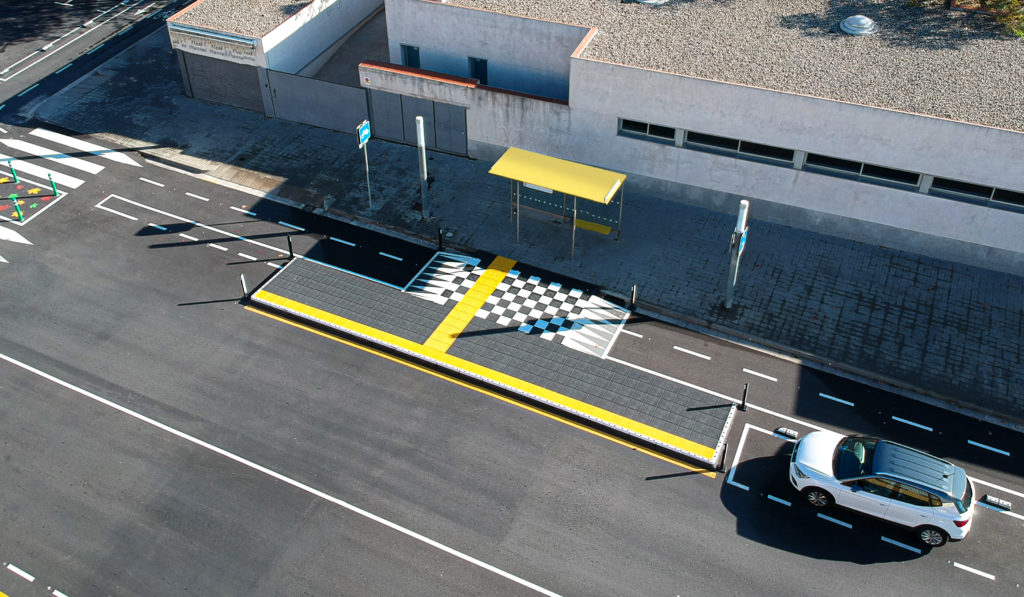
This configuration allows cyclists to ride behind bus stops. It reduces coexistence conflicts between them, bus users and buses, and, at the same time, creates a safe waiting area for the bus users.
This is the recommended configuration when a bus stop coexists with a bike lane and when there is enough space available on the section of the street. In the area of conflict between bus users and cyclists, ramps are installed to resolve the difference in level between the road and the platform.
The advantage of this configuration is that it offers a safe, exclusive waiting area for bus users.
Successful case study: improving bus stops for better accessibility and user comfort
The platform installed in Sant Just Desvern (Barcelona) in the summer of 2022 is a success story of this type of Vectorial® system platform. The aim of this project was to build the bike lane, maximize road safety benefits and guarantee the safe coexistence of bus users and cyclists at the bus stops along the bike lane.
4. Bus platform with island configuration.
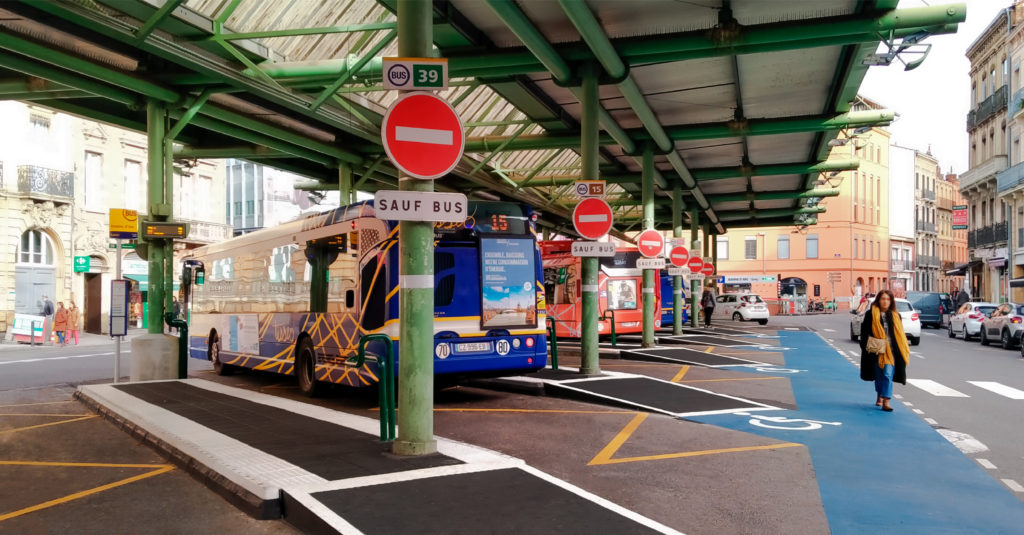
In this type of configuration, the bus waiting area is separated from the sidewalk by a cycle lane, which eliminates conflicts between buses and bikes at bus stops. This configuration offers an area devoted exclusively to waiting bus passengers and to boarding and disembarking. It also helps to optimize service times and improves accessibility to buses. Vectorial® system island configuration allows the creation of accessible stops with level or near-level boarding for both trams and buses.
This is the recommended configuration when the space occupied by the bus stop is not connected to the sidewalk. Access to the Vectorial® system platform with island configuration is via a ramp to the road.
Successful case study: improving accessibility at the bus station
The platforms installed at the end of 2022 at the Jeanne d’Arc station in Toulouse (France) are a clear success story of this type of configuration. Although we are used to seeing Vectorial® system platforms installed in the streets, in this case they were installed in a bus station, where they were needed to ensure that buses made their stops complying with the accessibility regulations. This shows the versatility and easy adaptation of the Vectorial® system platforms to different contexts.
Additionally, the satisfaction of public transportation users after the installation of the bus platforms is very positive. Here you can see a spot from our Swiss partner BURRI about a successful case. These initiatives not only fulfill legal obligations but also demonstrate ethical considerations and significantly enhance the user experience, fostering inclusivity and equality within society.
The construction of accessible bus stops fulfills legal obligations, responds to ethical considerations, and enhances the user experience for all citizens who use them. These accessible stops exemplify inclusive design that promotes equality and creates an environment where diverse abilities are not obstacles or reasons for exclusion. This is an investment in building a more equitable, fair, and understanding society.
Investing in accessible infrastructure reflects a commitment to building a fair and equitable society. If you’re embarking on an urban mobility project, we’re here to assist you. Contact our commercial technicians for personalized guidance on integrating ZICLA products into your project.


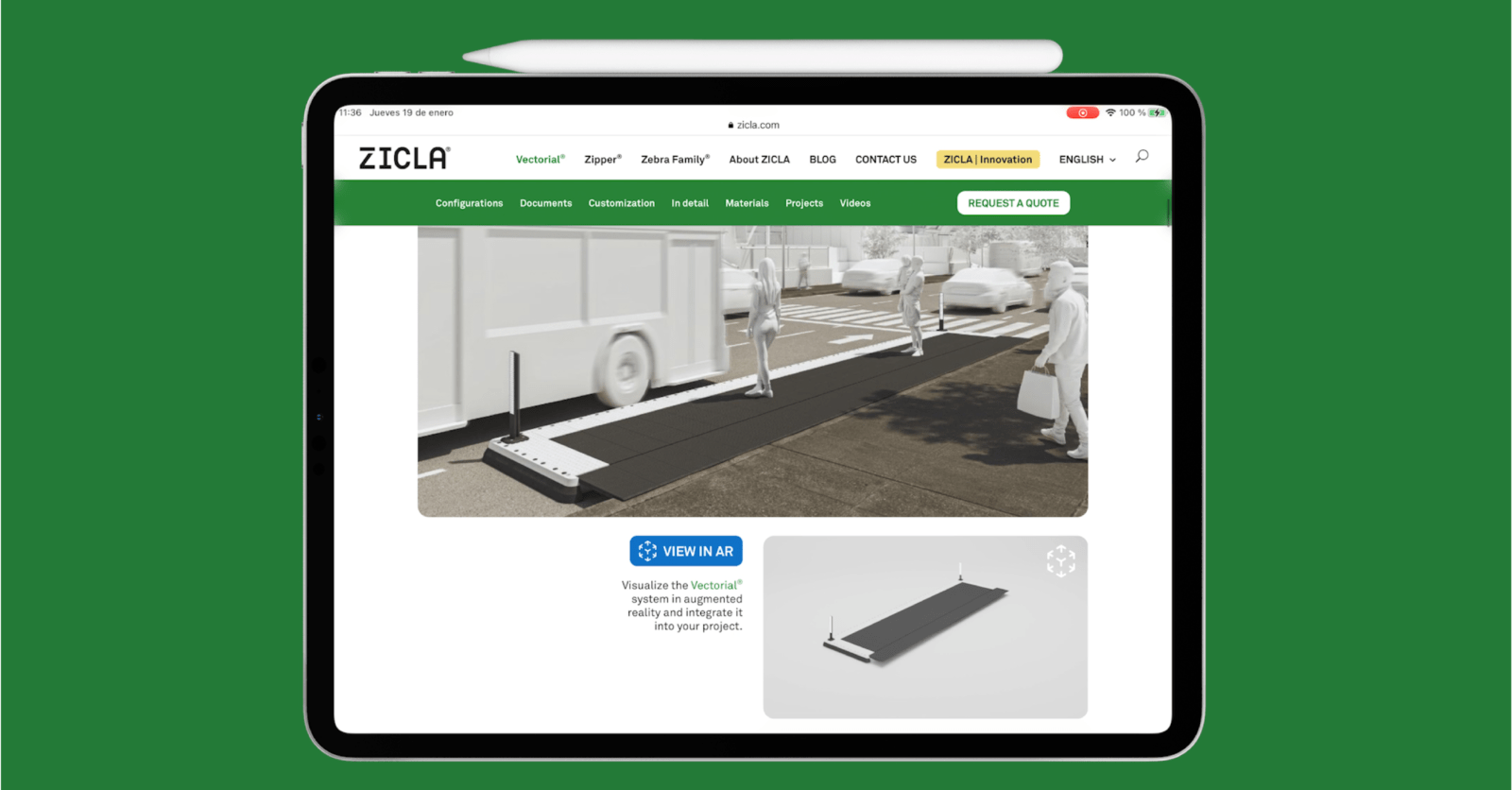
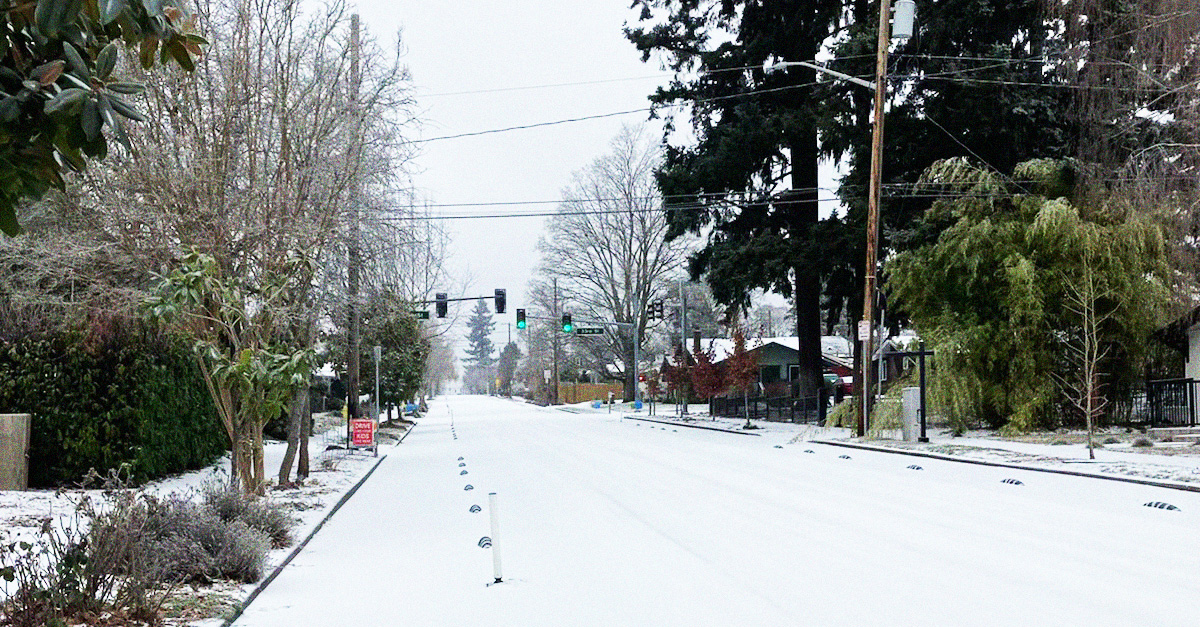
0 Comments